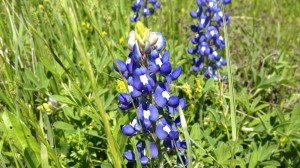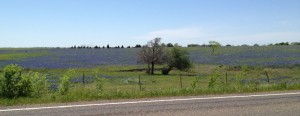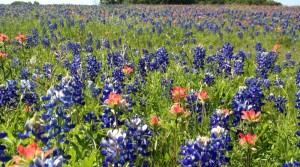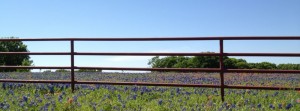In Texas in the spring, the bluebonnets bloom, between the fence strands, row on row, climbing to the sky beyond.
My favorite word-picture of the bluebonnet rests beside a reproduction of the original bloom in a book of paintings entitled “Texas Wild Flowers.” In the late 1840’s and early 1850’s, a young pioneer wife by the name of Eliza Griffin Johnston painted the flowers of the Texas prairies. In her own flowing hand, beside her picture of a single stem of bluebonnets, she writes: “The Lupin, called by the people of the country ‘Bonnet flower,’ it grows in such profusion that in the Prairie in the distance, often closely resembles the blue waters of a lake, and again on the horizon, one can scarcely tell where earth and sky meet.”
On Saturday, we drove the trails of the bluebonnets near Ennis, Texas, south of Dallas. Ennis is a small Czech town located across the farmlands from the other Czech community of West, Texas. West is where the fertilizer plant exploded last Wednesday, April 17, 2013, killing and injuring relatives and friends of so many who live in and around the villages of West and Ennis.
I always think of Ennis as meaning “east.” It is the town to the east of “West.” Between the two rural communities are the home-farms of those who came to this country to find a new home and to do what they do so well, farm the rich soils of central Texas. Where the soils are not so rich, on the sides of hills and sandy slopes near Ennis, the hardy wild flowers gaze out over the pastures below.
In the blooms this year, there seems a tinge of sadness. Yet, the stemmed petals stand bright and sure, encouraging those who travel the winding roads to stop their cars and walk out into the fields. The spirits of those visitors are lifted by the blue flowers nodding their bonnets across the prairies and to the west.
This single bloom stopped us by a small stream.
Driving on, we pulled to the side of the road to watch, through the car windows, Eliza’s blue waters flowing across the hills.
Nearby, we opened the doors and walked with others to kneel and take our pictures.
Continuing on, blues mixed with a spattering of orange tops brought our attention to some Indan paint brushes who had stopped to converse with the bonnetted farm wives.
Through the rust red of the fence, we spied far off the Stars and Stripes waving in a gentle breeze above the flowered heads.
Many a trip is from here to there and back again. For this day, ours was finishing. There is great beauty in the Texas spring, in the bluebonnet’s annual March to May, and the other petalled friends that greet them on their way. The images and the memories will linger long, as will those of the others we hold so dear.
Until the next spring,
Grandpa Jim






